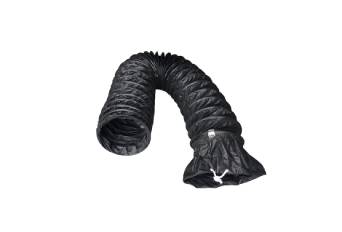E-mail: info@sp-vent.com
2020
What Are the Types of Air Ducts and Insulation Materials?
The materials used for the ventilation pipes should be selected according to the engineering requirements. The commonly used materials are as follows:
A metal sheet
The main material for making air ducts and components.
(1) The ordinary thin steel plate has good processing performance and structural strength and is often used for general ventilation pipes and dust removal ducts. The surface is prone to rust and should be painted to prevent corrosion.
(2) The galvanized steel plate is made of ordinary thin steel plate galvanized, and its surface is protected by a zinc layer to prevent rust. Due to its silver-white surface, it is also called ‘tinplate.’ Tinplate is generally thin and is commonly used in air-conditioning systems that are free of dust and abrasion in gases and in humid environments that are not affected by acid mist.
(3) Aluminum and aluminum alloy plates have good processing performance, corrosion resistance, and are not easy to produce sparks during friction, but the cost is high, and they are often used in ventilation systems that require explosion protection.
(4) The stainless steel plate has good corrosion resistance, and its cost is relatively high, but it is only required in the corrosion resistance of the chemical system, such as the ventilation pipe of the chemical system.

Flexible Duct
B Non-metallic materials
There are many types of non-metallic materials used in ventilation pipes, but their application is not as common as metal thin plates.
(1) Rigid PVC has strong acid, alkali and corrosion resistance, good mechanical processing performance, smooth surface, and convenient construction. Commonly used in corrosive gas ventilation systems. However, rigid PVC is not resistant to high temperature, and the use temperature generally does not exceed 60 degrees, the coefficient of linear expansion is large, and it is not easy to age and fire.
(2) FRP, which is a composite material made of glass fiber products as a reinforcing material and resin as a binder through a certain molding process. Good corrosion resistance, commonly used in exhaust systems containing corrosive gases and water vapor
(3) Plastic composite steel plate, which is a layer of 0.2-0.4mm thick plastic layer sprayed on the surface of the ordinary thin steel plate. Commonly used in air-conditioning systems with high dust-proof requirements and corrosion-resistant systems of -10 ℃ ~ 70 ℃. This kind of steel plate is more expensive and 50% more expensive than an ordinary carbon steel plate.
(4) Brick and concrete, which are the most common building materials, are often used in the use of construction space or laying underground ducts.
1) Thin steel plate: general ventilation and air conditioning system: 0.5 ~ 1.5mm; dust removal system: 1.5 ~ 3.0mm.
2) Plastic plate: Ventilation system containing corrosive gas.
3) Inorganic fiberglass: occasions with high humidity.
4) Various hoses: metal (Flexible Aluminum Duct), plastic (PVC Tarpaulin Duct), and some may have a thermal insulation layer.
5) Composite duct: double-layer aluminum foil plus phenolic resin, single-layer aluminum foil plus glass fiber, others.
6) New flexible duct system:
Advantages: uniform air distribution, avoiding the feeling of blowing; light weight, easy and fast installation, low structural requirements; good flexibility, easy system change; easy to clean
Insulate the Flexible Duct in the following situations:
(1) Because the loss of cold and heat is too large, it is not thermally insulated, and it is economically unreasonable;
(2) Due to the loss of cold and heat, the temperature of the medium cannot reach the temperature required by the design;
(3) Due to heat loss, the temperature of the gas transported in the air duct is reduced to the possibility of condensation or freezing in the air duct or in the subsequent dry dust collector;
(4) Due to the loss of cooling capacity, condensation occurs on the outer surface of the air duct;
(5) Due to the transportation of high-temperature gas, the temperature of the outer surface of the air pipe is too high (for example, greater than 50 ℃), which will cause burns to the operator, or may cause gas, steam, dust explosion and fire.
The specific requirements for insulation materials are:
(1) The thermal conductivity is small, generally not exceeding 0.23W / m · K;
(2) The material has high porosity and low density, and the density generally does not exceed 600kg / m3;
(3) It has a certain compressive strength and is not easy to deform;
(4) Low hygroscopicity, no corrosive effect on the pipe wall;
(5) Organic substances and flammable substances should not be used, otherwise, anti-corrosion and fire-proof treatment shall be carried out
(6) When used in high-temperature pipelines, it should be resistant to high temperatures and stable in performance at high temperatures;
(7) Easy construction and installation, low cost.
+86 757 8881 8835
+86 159 2073 7023
+86 757 8881 8836
66 Funing RD., Fuwan Gaoming, Foshan China
Keywords: Flexible Duct, Heat Resistant Duct, Heat Resistant Duct, Movable Ventilator...
Copyright © Foshan Senpeng Ventilation Co., Ltd. All Rights Reserved Sitemap | Technical Support: 

